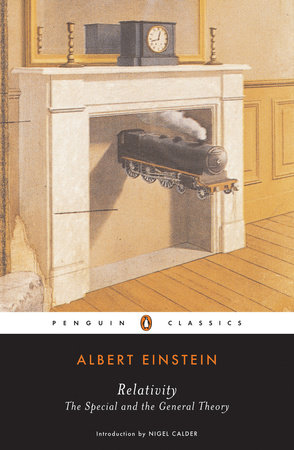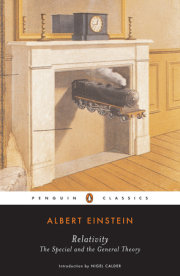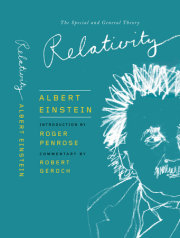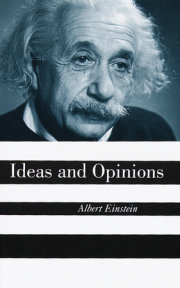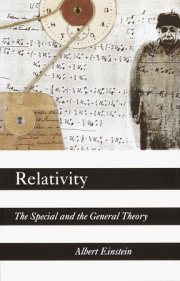Relativity
Introduction by Nigel Calder
Suggestions for Further Reading
Preface by Albert Einstein
Part I: The Special Theory of Relativity
1. Physical Meaning of Geometrical Propositions
2. The System of Co-ordinates
3. Space and Time in Classical Mechanics
4. The Galileian System of Co-ordinates
5. The Principle of Relativity (in the Restricted Sense)
6. The Theorem of the Addition of Velocities Employed in Classical Mechanics
7. The Apparent Incompatibility of the Law of Propagation of Light with the Principle of Relativity
8. On the Idea of Time in Physics
9. The Relativity of Simultaneity
10. On the Relativity of the Conception of Distance
11. The Lorentz Transformation
12. The Behaviour of Measuring-Rods and Clocks in Motion
13. Theorem of the Addition of the Velocities. The Experiment of Fizeau
14. The Heuristic Value of the Theory of Relativity
15. General Results of the Theory
16. Experience and the Special Theory of Relativity
17. Minkowski's Four-Dimensional Space
Part II: The General Theory of Relativity
18. Special and General Principle of Relativity
19. The Gravitational Field
20. The Equality of Inertial and Gravitational Mass as an Argument for the General Postulate of Relativity
21. In What Respects Are the Foundations of Classical Mechanics and of the Special Theory of Relativity Unsatisfactory?
22. A Few Inferences from the Genral Principle of Relativity
23. Behaviour of Clocks and Measuring-Rods on a Rotating Body of Reference
24. Euclidean and Non-Euclidean Continuum
25. Gaussian Co-ordinates
26. The Space-Time Continuum of the Special Theory of Relativity Considered as a Euclidean Continuum
27. The Space-Time Continuum of the General Theory of Relativity Is Not a Euclidean Continuum
28. Exact Formulation of the General Principle of Relativity
29. The Solution of the Problem of Gravitation on the Basis of the General Principle of Relativity
Part III: Considerations on the Universe as a Whole
30. Cosmological Difficulties of Newton's Theory
31. The Possibility of a "Finite" and Yet "Unbounded" Universe
32. The Structure of Space According to the General Theory of Relativity
Appendices
1. Simple Derivation of the Lorentz Transformation
2. Minkowski's Four-Dimensional Space ("World")
3. The Experimental Confirmation of the General Theory of Relativity
(a) Motion of the Perihelion of Mercury
(b) Deflection of Light by a Gravitational Field
(c) Displacement of Spectral Lines towards the Red
Index

